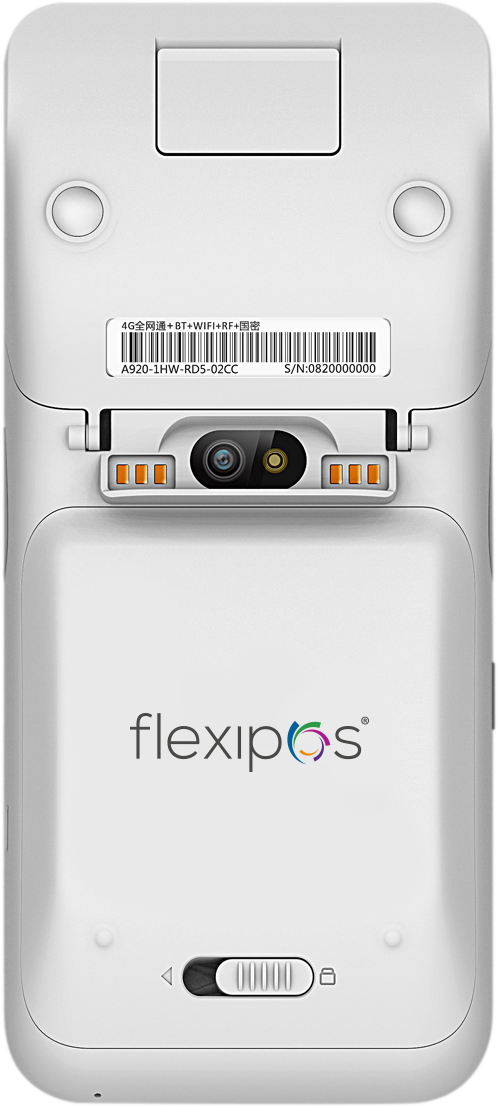


Suite de medios de pago compuesta por Hardware y Software que permite a las redes de adquirencia y a las empresas de medios de pago la conexión y gestión de sus dispositivos tipo punto de venta (POS) para la aceptación de tarjetas de pago.
Esta plataforma se basa en conexiones a través de aplicaciones seguras de software, certificadas bajo los más altos estándares de calidad y administradas por un sistema integral de gestión, Flexiweb, que permite el más eficiente control de las operaciones de sus Puntos de Venta.
Amigables
Fáciles de usar; ofrecen una experiencia de usuario superior a la del mercado actual.
Seguros
Certificados por los estándares de seguridad más destacados: PCI, EMV, Visa, Mastercard y American Express.
Portátiles
Dotados de un form-factor ligero y conveniente.
Flexibles
Capaces de recibir pagos con tarjetas Visa, Visa Electrón, Mastercard, Maestro, American Express.
Eficientes
Envío de recibos de cierre de lote vía correo electrónico.
Rápidos
Están dotados con un procesador de alto rendimiento, lo que permite realizar transacciones en el menor tiempo posible.
Versátiles
Cuentan con distintos tipos de tecnologías como GSM, WiFi, Bluetooth y NFC.
Resistentes
Elaborados con materiales de alta durabilidad.
Flexipos/Web
Gestione sus puntos de venta en línea
Flexipos/Web es un servicio en línea que permite administrar todos sus dispositivos de pago certificados con nuestra plataforma Flexipos® fácilmente, lo que representa una solución eficaz para la gestión comercial de empresas u organizaciones que manejen más de cinco terminales.

Amigables
Fáciles de usar; ofrecen una experiencia de usuario superior a la del mercado actual.
Estadísticas
Conserva registros de resultados diarios por cada dispositivo, los cuales se clasifican por zona, usuario y franquicia.
Recibos Electrónicos
Reproduce cada recibo generado por el POS Flexipos®. A su vez, los comercios pueden consultar a través del servicio web cada recibo de cierre de lote.
Administración
Dispone de un sistema adecuado para visualizar la asignación de cada dispositivo Flexipos® a sus usuarios en una red local o corporativa, según el perfil.
Geolocalización
La funcionalidad GPS integrada al Flexipos® envía a Flexipos/Web la posición o ubicación del dispositivo al momento de realizar el cierre de lote.
¿Quiénes lo utilizan?
Este producto está dirigido a cualquier tipo de comerciante que desee recibir pagos en su negocio con la mejor tecnología del mercado.
Pequeños y medianos comerciantes
Promueva el crecimiento de su negocio con la última tecnología en procesamientos de pago.
Tiendas de conveniencia, kioscos y cantinas
Agilice las compras al aceptar pagos con tarjeta de débito y crédito.
Red de distribuidores
Ruteros, camiones de despacho y transportistas que realizan distribución y/o cobro de mercancías.
Profesionales independientes
Profesionales de libre ejercicio como odontólogos, médicos, contadores, entre otros.
Alta movilidad
Negocios con alta movilidad como taxis, transportistas, mensajería, despacho a domicilio y comida para llevar.
Ferias y eventos
Ideal para ferias y eventos en los que los comerciantes disponen de una ubicación temporal y/o se requieren múltiples puntos de cobro.
Contáctanos

Legal Aspects / Privacy Policy
Term and Conditions
Copyright ©2022 Flexipos®. All Rights Reserved.
CONTACT US
1430 S Dixie Hwy – Unit 307, Coral Gables, FL 33146
+1(833) 3539476












